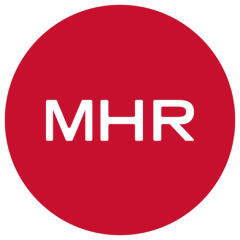Building workforce stability in charities with forecasting tools

With UK charity and NFP organisations currently having more than double the staff turnover rate of businesses in the private sector, workforce stability is more crucial than ever.
Staff churn not only disrupts operations and service delivery, but it also eats into already stretched budgets. Solving the issue of staff churn in the charity sector isn’t easy. However, there is one powerful ally in solving this problem: workforce forecasting.
What is workforce forecasting?
Workforce forecasting is the process of predicting future staffing needs of an organisation. By using the correct tools, organisations can analyse data to ensure they have the right number of employees, with the right skills at the right time to operate as effectively as possible.
Key aspects of workforce forecasting for charities
- Demand planning: Estimating the number and type of employees required to meet an organisation's objectives moving forward
- Supply analysis: Understanding the skills of the current workforce to ensure it aligns with both current and future needs
- Data-driven insights: The use of existing data to analyse trends and build predictions about future workforce needs
- Integration of technology: Leveraging your people management software to track and forecast key data
Here are the top five ways that forecasting can build and promote workforce stability for charities:
1. Reducing reliance on temporary staff
In the charity sector, temporary or agency staff are always going to be essential, especially during busier periods. However, despite the necessity for temporary employees, heavily relying on this does come with some pitfalls.
The primary concern with using temporary and agency staff is the drain that it can have on budgets. Constant time spent on recruitment and third-party employer fees can really add up and take valuable resources away from helping your beneficiaries.
Workforce forecasting tools, such as People First, allow charity organisations to analyse data from years gone by and strategically plan for staffing requirements in the future. With workforce insights, people managers within charities can reduce last-minute, interim hires and instead recruit permanent team members ahead of time.
Predicting staffing needs ahead of time not only reduces the reliance on temporary staff, saving time and money on recruitment, but also allows for staff development. Ultimately, that provides a higher quality of care and support to those who need it.
- Top tip: Continuously monitoring staffing trends allows people managers to identify workforce trends and act by filling recurring roles with permanent employees.
2. Identifying staff turnover trends
Frontline care jobs, by nature, are some of the most emotionally demanding roles out there. Due to the emotional demands, it’s no surprise that in 2022/23 there was a 28.3% overall turnover rate for adult social care workers in the UK. That’s nearly 10% higher than staff turnover across all NFPs across the same period.
Forecasting tools can provide critical insights into your workforce trends. By analysing exit data and survey results, you can find patterns in turnover, whether it’s caused by workload, pay competitiveness, or lack of development opportunities. Armed with this data, organisations can introduce targeted strategies to address these specific concerns, for example, by enhancing career progression pathways or improving work-life balance initiatives.
- Top tip: Use real-time reporting features within forecasting tools to track patterns in voluntary leavers, particularly by role type or region, and design tailored retention plans accordingly.
3. Driving staff retention through employee engagement
Keeping employees content and engaged often makes the biggest difference in retaining a stable workforce. Measuring that, however, is often quite difficult. How do you quantify happiness?
Here’s where forecasting tools equipped with employee experience features come in. These tools can send out pulse surveys, gather honest employee feedback, and identify areas of dissatisfaction. This knowledge helps charities act sooner rather than later, creating proactive engagement strategies such as wellbeing programmes, better recognition schemes, or mentorship opportunities. This approach fosters a supportive work culture, making employees feel valued and less likely to leave.
- Top tip: Ensure forecasting software gathers regular workforce surveys alongside operational data so insights into engagement and performance remain aligned.
4. Workforce development
Charities often face the challenge of prioritising immediate operational needs over long-term workforce planning. But building organisational resilience requires looking beyond short-term fixes.
Forecasting tools provide the opportunity to take a long-term view of recruitment and workforce needs. By visualising future staffing trends, charities can create detailed roadmaps that align their workforce growth with broader organisational goals. They can also ensure ongoing investment in professional development for critical talent, creating a strong internal pipeline to fill leadership roles as the organisation grows. This planning prevents the chaos of last-minute hiring while addressing the root causes of instability.
- Top tip: Use forecasting dashboards to align recruitment planning with five-year organisational growth projections. Regularly reassess strategies considering emerging insights.
5. Allocation of resources
One of the hidden challenges of workforce instability is how it compounds. High turnover increases the pressure on remaining employees to perform, leading to burnout, leading to high turnover. Yet when you look under the hood, other teams might be over-resourced, leading to unengaged employees with nothing to do.
With workforce planning tools, charity organisations can map out current resource gaps, anticipate engagement spikes during busy periods, and allocate people effectively. For example, you can identify teams at risk of burnout and redirect extra capacity from areas where workloads are lighter.
- Top tip: Implement shift scheduling tools to match staffing allocation to forecasted service demands. This ensures all areas are adequately covered while preventing employee overload.
Building stability, one step at a time
By tackling challenges like high turnover, reliance on temporary workers, and inefficient resource allocation, these workforce management tools empower charities to strengthen their teams and maximise their impact.
Don’t just fixate on mending what's broken today. Look into protecting and evolving what you’re capable of tomorrow. Build a resilient, future-ready workforce.



